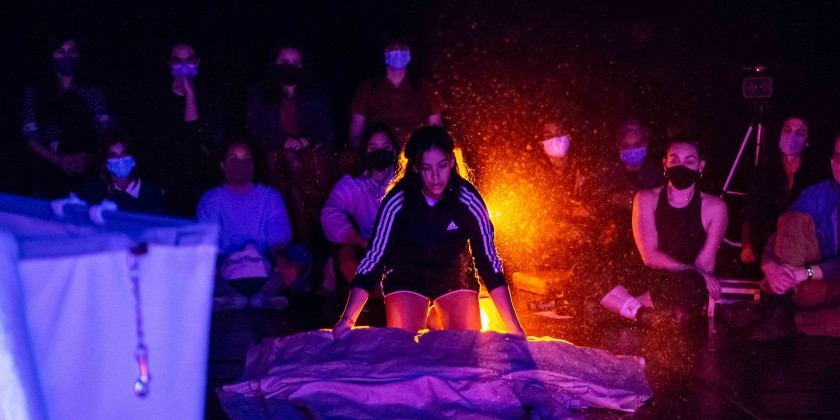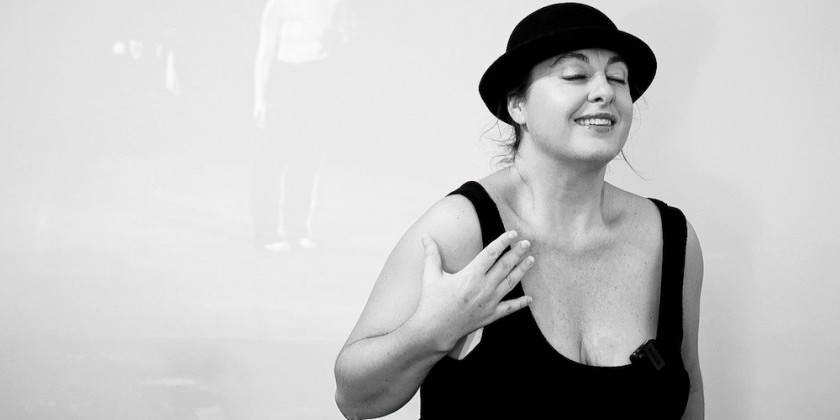IMPRESSIONS: "UNEDITED," Featuring Rachna Nivas and Students of the Leela Dance Collective, at Dixon Place

October 23, 2021
Performance: Rachna Nivas and Leela Dance Collective
Musicians: Hindole Majumdar, Tabla; Samarth Nagarkar, Vocal; Abhik Mukherjee, Sitar; Sonali Toppur, Harmonium and Vocals
The Kathak dance tradition of northern India arrived in San Francisco in the 1970s, riding a wave of enthusiasm for Indian art and spirituality, and spread from there up and down the West Coast. Fifty years later, this lively art has finally taken the leap to the dance capital of the world, with the official launch of the Leela Dance Collective in New York. It took off with a tour-de-force performance by Leela’s director, Rachna Nivas.
Kathak combines dance, music, poetry, and storytelling to dramatize the history and mythology of India, drawing on both Hindu and Muslim sources. The program began with an invocation to the Hindu god Ganesh, the remover of obstacles: a simple, graceful blessing of the stage by a corps of students, young women steeped in the ancient gestures of art as worship. They cleared the stage for Nivas, who proceeded to demonstrate Kathak dance forms from A to Z, accompanied by master Indian musicians living in the US.

The two-hour lecture-demonstration was too long and ambitious but had a happy ending. Nivas saved her best for last by acting all the parts in a well-known Hindu folk tale. The mischievous god Krishna spots a group of cow-herdesses skinny-dipping in a river, and he makes off with their saris. Just a joke, but one that sets off a riot of conflicting emotions among the women. In the end, he returns their clothes and takes the women to his heart.
Using innumerable subtle gestures of the hands, feet, eyes, head, and torso, and leaping back and forth between masculine and feminine roles, Nivas elevates this tale into a metaphor of crisis and comfort — the cycle of spiritual life.

Following that, the program ended with a tarana, a speedy, spontaneous dialogue between dancer and musicians, built to a rhythmic call-and-response with tabla drummer Hindole Majumdar. Nivas tore through the Kathak equivalent of 32 fouettés, bells jangling on her ankles as she tapped, stomped, spun and ended on a dime — in perfect time with a final whack of the drum. Exciting!
In its theatricality and gestures, Kathak bears a dim resemblance to classical ballet, and they share some ancestry in the court dances of the Middle East. Arabesque arms are one common feature, with the forward arm facing upward and gently curved in the Kathak style. Below the waist, Kathak dancers keep both feet close to the ground, tapping fiercely as they whirl. Kathak is much more highly developed in the upper body, and especially the hands, which have a vocabulary of mudras, each delicate shape communicating a state of mind. The head also moves side to side above the neck, a skill little-known in the West. And the eyes have a language of their own.

The all-female Leela Dance Collective is setting out to make Kathak one of the many dance languages of New York. They are opening classes for children, teens, and adult beginners in Manhattan, Queens, New Jersey, and Long Island. It’s a rigorous dance discipline, and the results look satisfying — natural and deeply expressive.
Just keep an eye on your sari.














